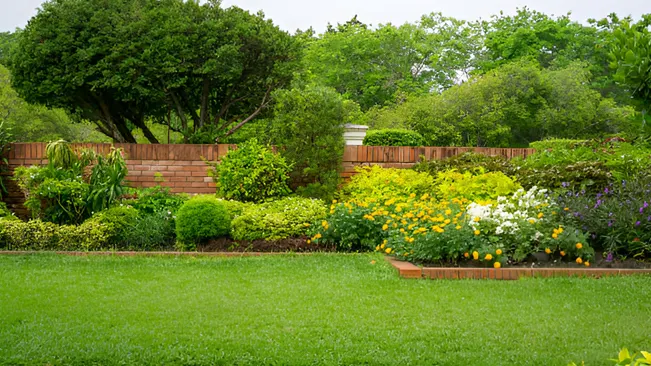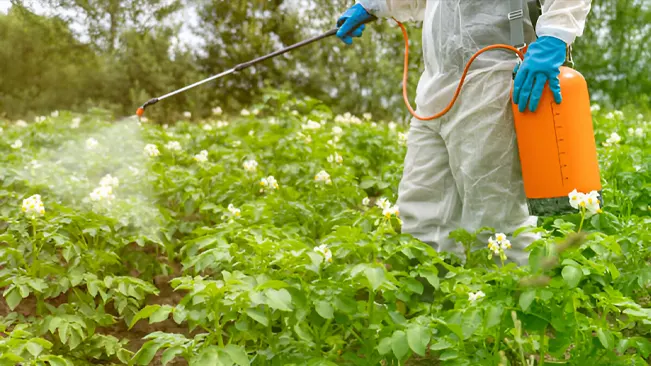How to Identify and Eliminate Invasive Plants in Your Backyard
- August 15, 2024
- 0 comment
Invasive Plants keeping your backyard healthy and thriving requires more than just regular watering and pruning. One of the biggest challenges gardeners face is dealing with invasive plants. These plants can quickly take over your garden, crowding out native species and disrupting the ecosystem. This article will guide you through the process of identifying invasive plants and provide practical methods to eliminate them effectively.

Understanding Invasive Plants
Invasive plants are non-native species that have been introduced to an area, often unintentionally, through human activities like trade and landscaping. These plants spread rapidly and can cause significant harm to local ecosystems, the economy, and human health. Unlike native plants, invasive species often lack natural predators or diseases in their new environment, allowing them to grow aggressively and dominate. This unchecked growth enables them to outcompete native flora for essential resources such as sunlight, water, and nutrients, leading to reduced biodiversity. Their presence can disrupt habitats, displace native wildlife, and alter soil chemistry, ultimately threatening the ecological balance.
Characteristics of Invasive Plants
- Rapid Growth: Invasive plants grow and spread quickly, often overwhelming native species.
- High Reproduction Rate: They produce a large number of seeds, increasing their ability to colonize an area.
- Adaptability: Invasive species can thrive in a variety of conditions, making them difficult to control.
- Lack of Natural Predators: In their new environment, invasive plants often lack predators or diseases that would normally keep their population in check.
Common Invasive Plants
Identifying common invasive species in your region is the first step in controlling them. Here are some well-known invasive plants found in many backyards:

- Japanese Knotweed (Fallopia japonica): Recognizable by its bamboo-like stems and heart-shaped leaves.
- English Ivy (Hedera helix): A climbing vine with dark green, glossy leaves that can smother trees and structures.
- Garlic Mustard (Alliaria petiolata): Has small white flowers and a garlic smell when crushed.
- Purple Loosestrife (Lythrum salicaria): Displays tall spikes of purple flowers and invades wetlands.
- Kudzu (Pueraria montana): Known as “the vine that ate the South,” it grows rapidly and can cover large areas.
How to Identify Invasive Plants
Correctly identifying invasive plants is crucial before attempting to remove them. Here are some steps to help you identify these plants in your backyard:
1. Research Local Invasive Species
Start by researching local resources such as government websites, extension offices, or gardening groups that provide detailed information about invasive species specific to your area. These resources often maintain comprehensive lists of problematic plants, including descriptions, images, and identification tips, which can help you recognize potential threats in your garden. By familiarizing yourself with these local invasive species, you can take proactive steps to prevent their spread and protect native biodiversity in your community.
2. Examine Plant Characteristics
Look for specific traits that are common in invasive species, such as:
- Leaf Shape and Texture: Note any unique leaf shapes, textures, or colors.
- Growth Patterns: Observe if the plant is growing aggressively or dominating certain areas.
- Flower and Seed Production: Identify flowers and the amount of seed produced, which might indicate a plant’s invasiveness.
3. Use Identification Apps and Guides
Using identification apps and field guides can greatly assist in distinguishing plant species by providing extensive databases with images, descriptions, and key identification features. Apps like PlantSnap and Seek by iNaturalist allow users to take photos of plants and receive suggestions on species identification, which is especially useful for differentiating between similar-looking plants. Field guides offer additional insights with detailed illustrations and habitat information, making them valuable tools for gardeners and environmentalists to accurately identify both native and invasive plant species.
Methods to Eliminate Invasive Plants
After identifying invasive plants in your backyard, it’s crucial to act swiftly to prevent them from spreading and causing ecological damage. Effective methods for eliminating invasive species include manual removal, such as hand-pulling or digging out root systems, and using mulching to suppress regrowth by blocking sunlight. Additionally, applying targeted herbicides or introducing biological controls like natural predators can help manage larger infestations, ensuring that invasive plants are thoroughly eradicated while minimizing harm to native flora and fauna.
1. Manual Removal
For smaller invasive plants or seedlings, hand pulling is an effective removal technique. Carefully grip the plant at its base and pull steadily to ensure you remove the entire root system, as leaving any part of the root can lead to regrowth.

For larger plants or those with extensive root systems, use tools like shovels or spades to dig them out completely, taking care to avoid disturbing or damaging nearby native plants that you wish to preserve. By thoroughly removing the roots, you can prevent the invasive plants from re-establishing themselves in your garden.
2. Mulching
Applying a thick layer of organic mulch, such as wood chips, straw, or bark, around desirable plants is an effective method to inhibit the growth of invasive species. The mulch blocks sunlight, reducing the ability of invasive plants to photosynthesize and germinate, while also helping to retain soil moisture and regulate temperature for your garden plants.

For larger areas infested with invasive species, using plastic sheeting or landscape fabric can provide a more durable barrier, preventing invasive plants from sprouting by suffocating them and stopping sunlight from reaching the soil. This approach not only controls invasive growth but also enhances the overall health and appearance of your garden by promoting healthier soil conditions.
3. Chemical Control
When using herbicides to control invasive plants, selectivity is crucial. Choose herbicides that are specifically formulated to target the invasive species you want to eliminate without harming desirable plants or other non-target species in your garden.

Applying these selective herbicides at the optimal time of year is also important; this usually means spraying when invasive plants are most vulnerable, such as during their active growth phase in early spring or late fall. By carefully timing the application, you maximize the herbicide’s effectiveness, ensuring better control of the invasive plants while minimizing the impact on your garden’s ecosystem.
4. Biological Control
Biological control is an environmentally friendly approach to managing invasive plants by using natural enemies like insects and pathogens. Introducing certain insects that feed specifically on invasive plant species can effectively reduce their population.

These insects, such as beetles or caterpillars, naturally control invasive plants without harming native flora or fauna. Additionally, certain fungal or bacterial pathogens can be introduced to target specific invasive species, causing diseases that weaken or kill the plants. By leveraging these natural adversaries, biological control methods provide a sustainable and eco-friendly strategy to manage invasive plant populations and restore ecological balance.
5. Replanting with Native Species
After removing invasive plants, it’s important to replant the area with native species to help restore the ecosystem’s natural balance and prevent the return of invasives. Native plants are well-adapted to the local climate and soil conditions, allowing them to thrive without the need for excessive maintenance, while their deep root systems stabilize the soil and prevent erosion.

Additionally, native plants provide essential food and habitat for local wildlife, supporting biodiversity by attracting pollinators like bees and butterflies and offering shelter and nesting sites for birds and other animals.
Monitoring and Prevention
Preventing the re-establishment of invasive plants is just as important as removing them. Regular monitoring and maintenance will help keep your backyard free from these unwanted species.
1. Regular Inspections
Inspect your garden frequently for signs of new invasive plants. Early detection allows for quicker and more manageable removal.
2. Educate Yourself and Others
Stay informed about invasive plants and their impacts on the environment. Share this knowledge with neighbors and local gardening groups to promote community efforts in controlling invasives.
3. Proper Disposal
Dispose of invasive plant material properly to prevent their spread. Bag and trash plant debris or follow local guidelines for disposal.
4. Limit Soil Disturbance
Minimize soil disturbance to reduce the chance of invasive plants taking hold. Avoid unnecessary digging or tilling, which can expose dormant seeds.
Conclusion
Managing invasive plants in your backyard is a continuous process that requires vigilance and dedication. By identifying and eliminating these plants effectively, you can help preserve the native ecosystem and enjoy a healthier, more diverse garden. Remember to stay informed, act quickly, and encourage others to join in the effort to combat invasive species.
FAQs
- How do invasive plants spread so quickly?
Invasive plants spread rapidly due to their ability to produce large quantities of seeds, their adaptability to various environments, and the lack of natural predators in new areas that would normally control their growth. - Can invasive plants be beneficial in any way?
While invasive plants may have certain beneficial properties, such as erosion control or providing habitat, their negative impacts on biodiversity and native ecosystems usually outweigh any potential benefits. - What are the consequences of not removing invasive plants from my garden?
Failing to remove invasive plants can lead to the loss of native plant species, decreased biodiversity, alteration of local habitats, and potential harm to wildlife that rely on native plants for survival. - How do I know if a plant is invasive or just an aggressive grower?
Research the plant species to determine if it is listed as invasive in your area. Aggressive growers are not necessarily invasive but can dominate a garden; invasive plants are non-native and cause ecological harm. - What tools do I need for manually removing invasive plants?
Basic tools for manual removal include gloves, a shovel or spade, pruners, and a hand trowel. These tools help you uproot plants and remove root systems effectively. - Are there any native alternatives I can plant to replace invasive species?
Yes, many native plants serve similar functions as invasives, such as providing ground cover or attracting pollinators. Consult local gardening centers or native plant societies for recommendations specific to your area. - What should I do if I find an invasive plant that I can’t identify?
If you encounter an unknown plant, use identification apps, contact local extension services, or reach out to a native plant society for assistance in identification and management. - How long does it take to eliminate invasive plants completely?
The time required depends on the extent of the infestation and the methods used. Consistent effort over several growing seasons is often necessary to achieve significant control. - Can wildlife be affected by invasive plant species?
Yes, invasive plants can displace native species that wildlife depends on for food and shelter, potentially leading to reduced habitat quality and biodiversity loss. - Is there a best time of year to tackle invasive plant removal?
The best time to remove invasive plants is typically in the early spring or fall when plants are actively growing but before they set seed. This timing helps prevent further spread.

Evan Bennett
Forestry AuthorEvan Bennett brings over a decade of expertise in forestry wildlife management to the forefront, specializing in habitat conservation, biodiversity, and human-wildlife interaction. Evan's work ensures harmonious coexistence between wildlife and human communities through effective and sustainable practices. Continuously engaging in research and workshops, Evan stays at the cutting edge of wildlife management advancements. As a trusted advisor and contributor to leading environmental journals, Evan is dedicated to preserving the natural world for future generations.













Leave your comment